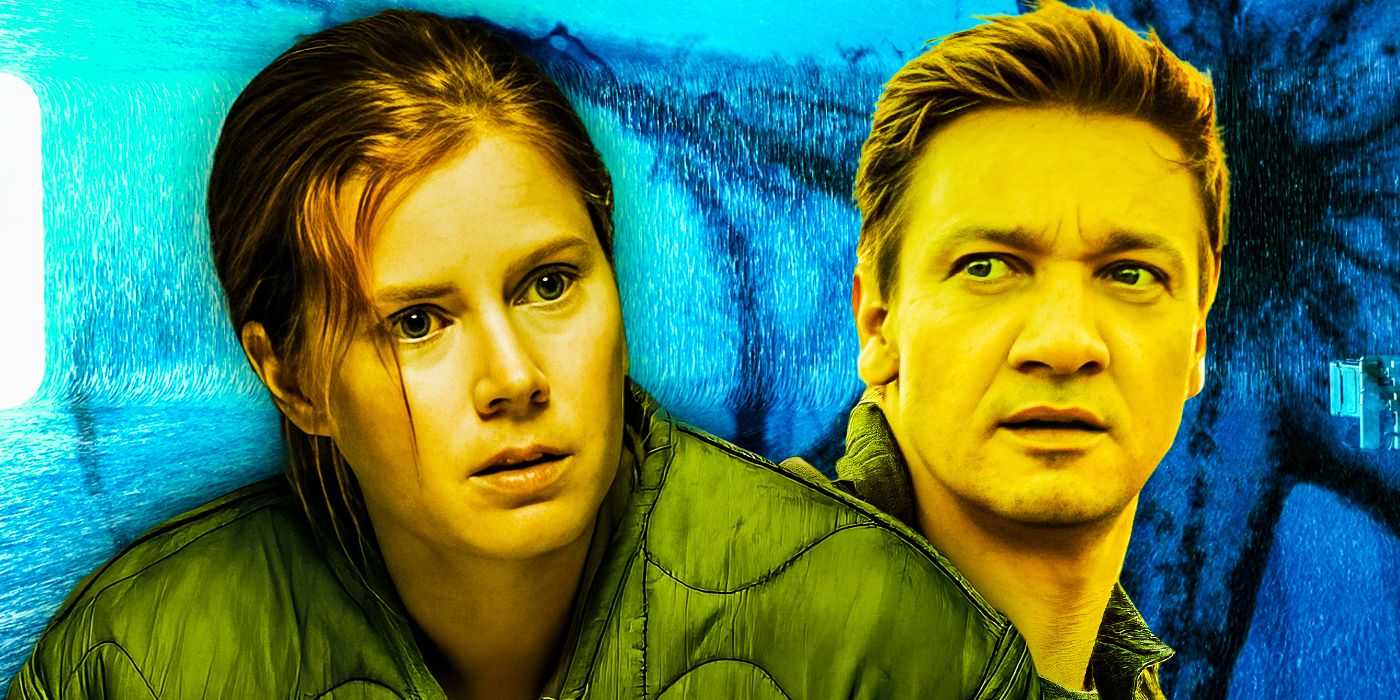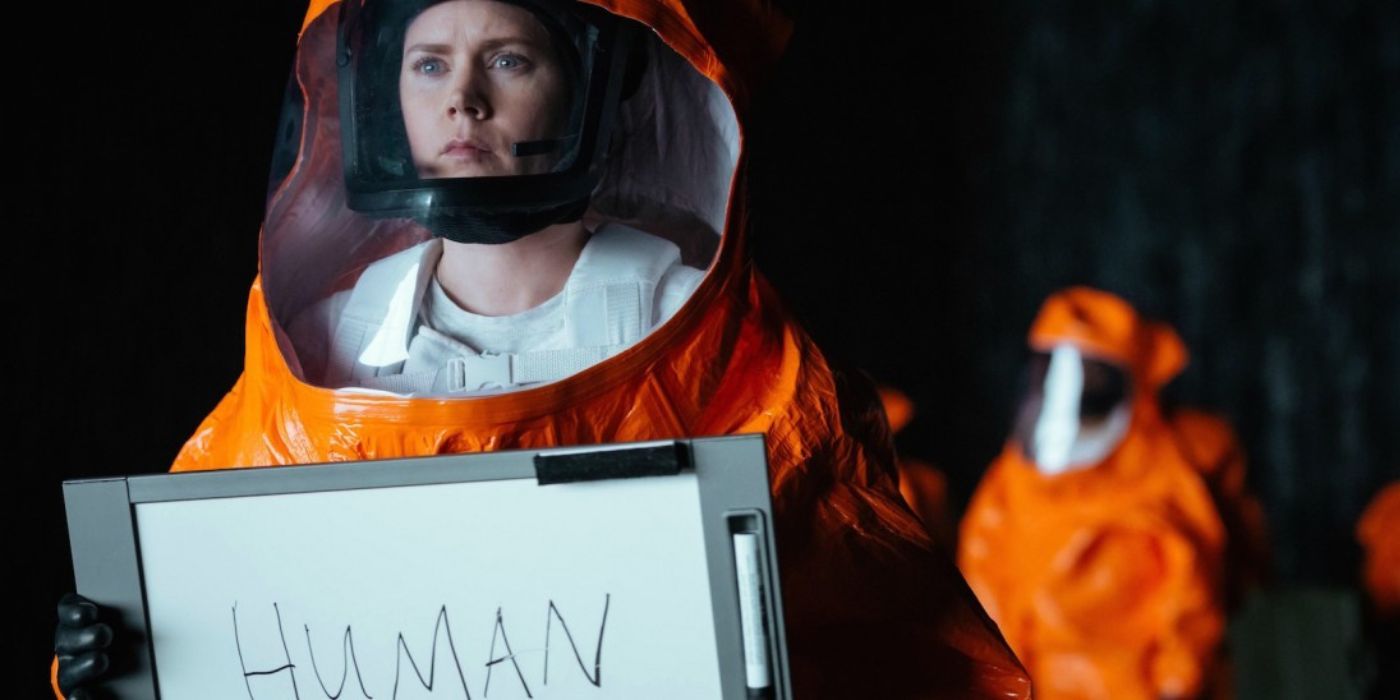Summary
- The timeline in Arrival is non-linear, with the twist being that the apparent flashbacks are actually memories of future events.
- The non-linear progression of the story allows the audience to experience the same confusion and discovery as the protagonist.
- While the protagonist can experience time non-linearly, other characters follow a linear timeline, with the story beginning with the aliens' arrival and ending with Hannah's death.
Denis Villeneuve’s Arrival might seem like a basic sci-fi movie on the surface, but it has a very complicated timeline that’s easy to misunderstand. The film tells the story of a professional linguist named Louise Banks who’s called in by the government when aliens land on the planet. It’s her job to ensure humans can interact effectively with these creatures, but she soon learns that their form of communication is beyond anything that human beings are capable of.
Arrival is an incredibly complicated story that he manages to make simple through plenty of clear visual clues, allowing the audience to track Banks’ journey from start to finish - even when it’s not presented that way in the story. The big twist at the end of Arrival reveals that everything preceding that moment hasn’t been exactly as it seems, but upon a rewatch of the movie, all the clues are presented from the beginning, allowing the audience to piece Banks’ timeline together in the right order.
Arrival is available to stream on Peacock Premium and Paramount+
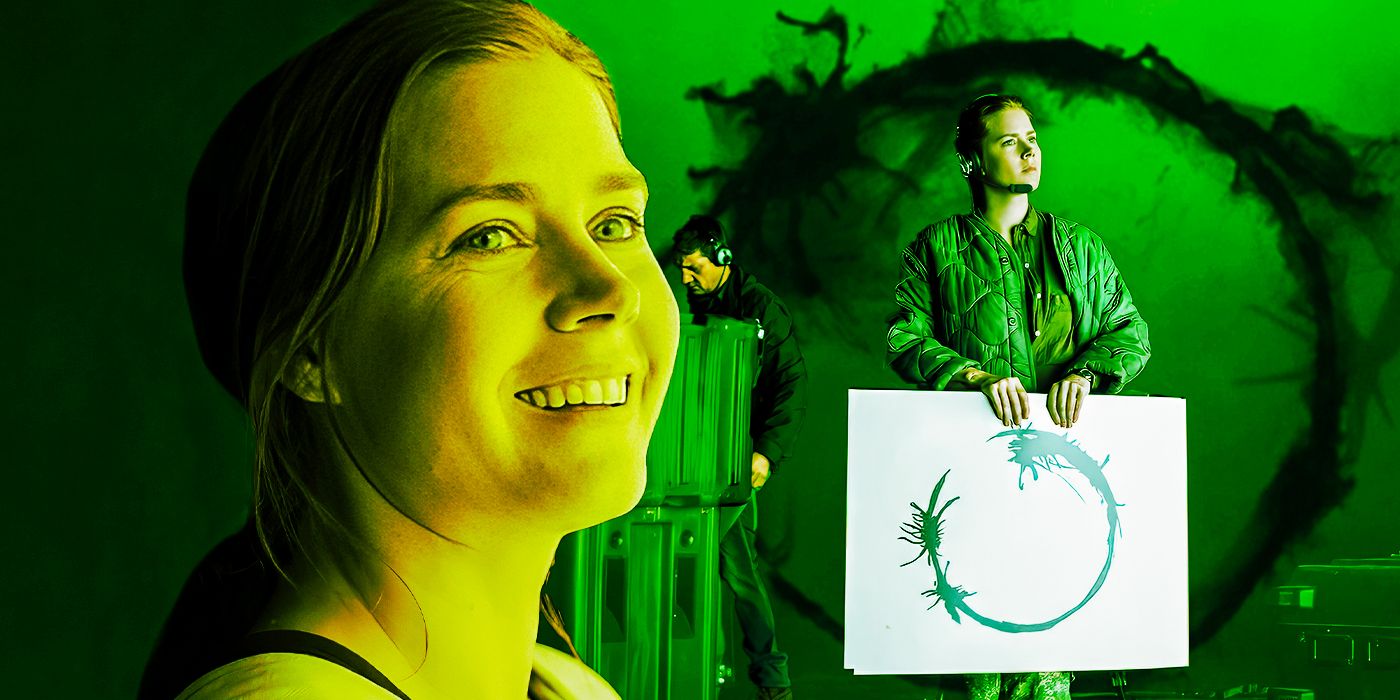
Arrival's Aliens Explained: Language, Design & More
Arrival weaves a narrative centering on an alien language, which can be hard to comprehend since it presents complex ideas about time and perception.Banks' "Memories" Of Hannah Are Actually From The Future
Interatcion With The Aliens Has Granted Banks The Gift Of Prescience
It distorts her perception of time and prevents her from experiencing her own life in the order it should happen.
At the end of Arrival, it’s revealed that Banks has acquired the ability to view time in the same way that the aliens do: non-linearly. This means that she’s lost all concepts of past, present, and future, with each of these points bleeding together in her perception and happening all at once. It’s this distorted timeline that the audience is presented with right from the beginning, with the apparent flashbacks of Banks’ daughter revealed as memories that haven’t even happened yet.
Arrival’s twist messes with the audience’s mind at first, but it makes sense once they view the narrative as non-linear. Banks’ daughter hasn’t been born when she experiences these memories, and Banks knows she’s destined to only live 12 years. It distorts her perception of time and prevents her from experiencing her own life in the order it should happen. This ability is shown to be both a blessing and a curse, as she uses her knowledge of the future to bend the present around her will in a non-zero-sum game.

Arrival: 10 Hidden Details Everyone Completely Missed
Although some details are evident to most audiences upon a second viewing, many are not. Here are the top ten details everyone missed in Arrival.Arrival's Events All Happen Once, But Nonlinearly
The Arrival Movie's Non-Sequential Narrative Explained
What’s important to note about Arrival’s timeline is that it’s not non-linear in the same way that movies like Pulp Fiction or Memento are non-linear: it’s not jumping between past, present, and future. These moments are all happening at the same time, but Banks (and the aliens) are the only ones who aren’t forced to view them in a sequential order.
When the audience is presented with those "memories" of Hannah’s death, this isn’t something that Banks has experienced in the past or will experience in the future, it’s something that she’s experiencing right now — but it takes the aliens for her to gain access to this. The clues to Arrival’s twist are available from the beginning, as the story opens on something that hasn’t technically happened yet from Banks’ perspective.
Villeneuve is allowing his viewers to go through the same process as his protagonist.
By confusing the audience and placing them within this non-linear time frame, director David Villeneuve is allowing his viewers to go through the same process as his protagonist and gradually learn to view time differently. These moments in Banks’ timeline are all presented out of order, and while they initially appear to be flashbacks, it makes the twist ending much more comprehensible, as the audience is already familiar with this non-linear progression.
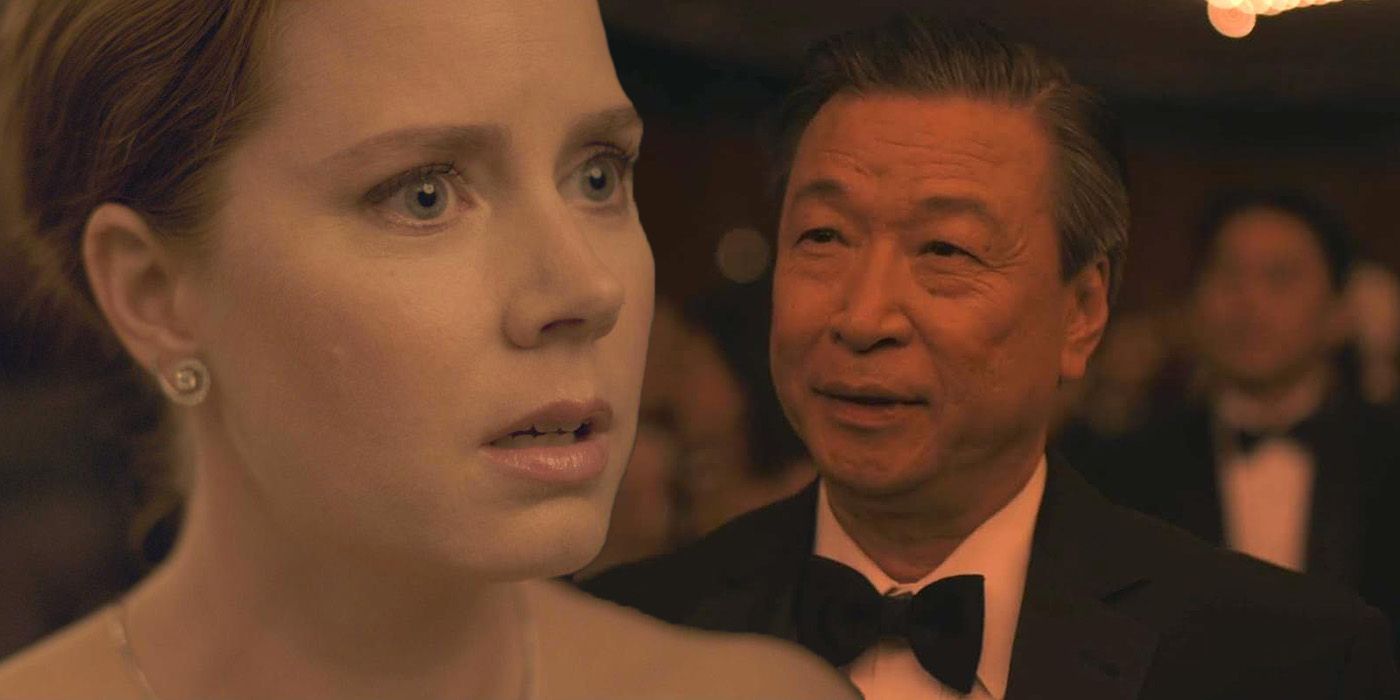
Arrival: What Louise Told General Shang (His Wife's Dying Words Translated)
Louise shares Shang’s wife’s dying words with him in Mandarin which completely alters his plans and the course of Denis Villeneuve’s Arrival.Arrival's Linear Timeline Begins With The Aliens' Arrival & Ends With Hannah's Death
The Actual Order Of Events In Arrival Creates Different Ways To View The Story
Although Banks can experience time non-linearly, that isn’t true for every other character in the story. They have to live their lives sequentially, which means there does exist a linear timeline that everybody else must follow. In terms of the events covered in Arrival, this timeline begins with the aliens arriving on Earth, continues into Banks’ attempts to make conversation with them, and ultimately results in Hannah’s death approximately thirteen years later.
It’s this ability to view the story in several different ways that makes Arrival one of Villeneuve’s best movies yet. The audience is initially thrust into Banks’ distorted perspective, but thanks to the clues Villeneuve includes, there’s enough information to piece together the timeline and make sense of this story from a more accessible perspective. Hannah’s death is both the beginning and the ending of Arrival, depending on which point you’re accessing the story from, which makes the movie an endless cycle.
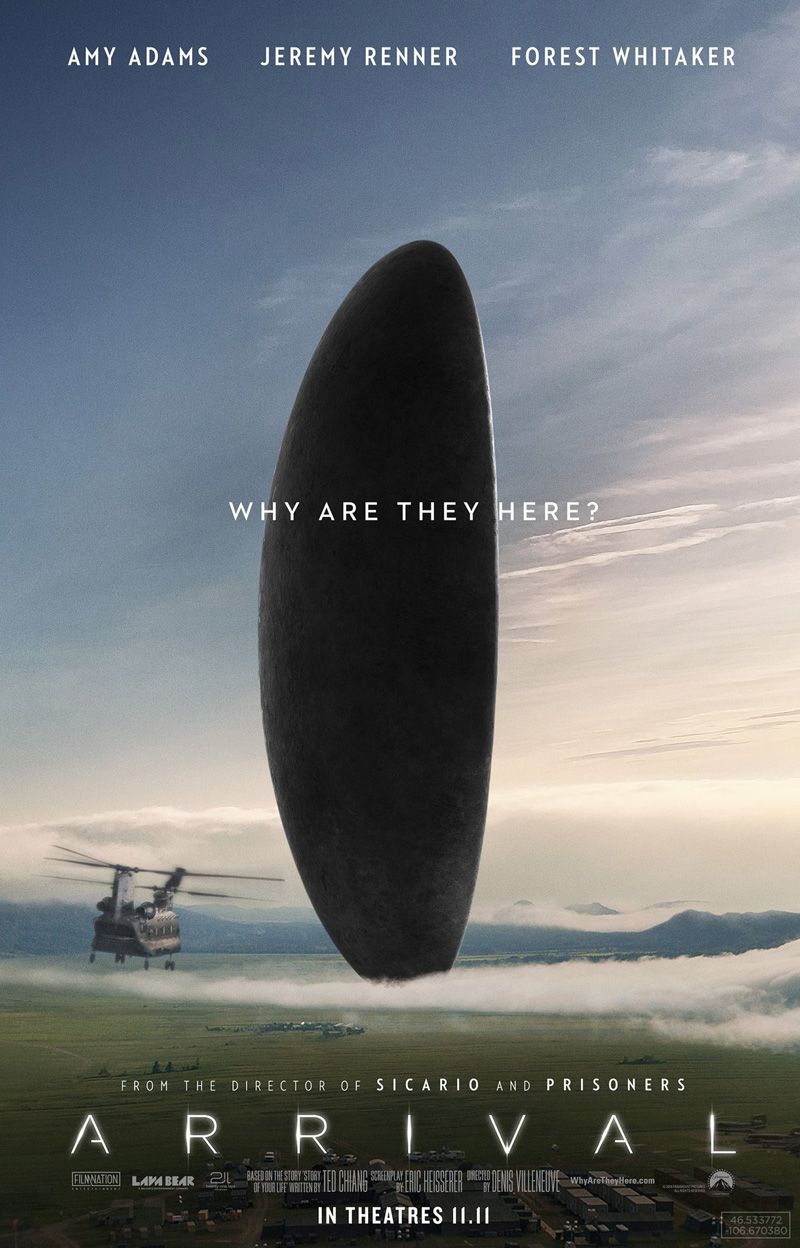
Arrival
Based on Ted Chiang's short story "Story of Your Life", Denis Villeneuve's Arrival follows Louise Banks (Amy Adams), a linguist brought in to establish a line of communication with an alien species that have recently landed on Earth. With the help of physicist Ian Donnelly (Jeremy Renner), Banks begins to understand more of the aliens' communications, and it alters her perception of life forevermore.
- Director
- Denis Villeneuve
- Release Date
- November 10, 2016
- Studio(s)
- Paramount Pictures
- Writers
- Eric Heisserer , Ted Chiang
- Cast
- Michael Stuhlbarg , Forest Whitaker , Tzi Ma , Amy Adams , Mark O'Brien , Jeremy Renner , Nathaly Thibault

